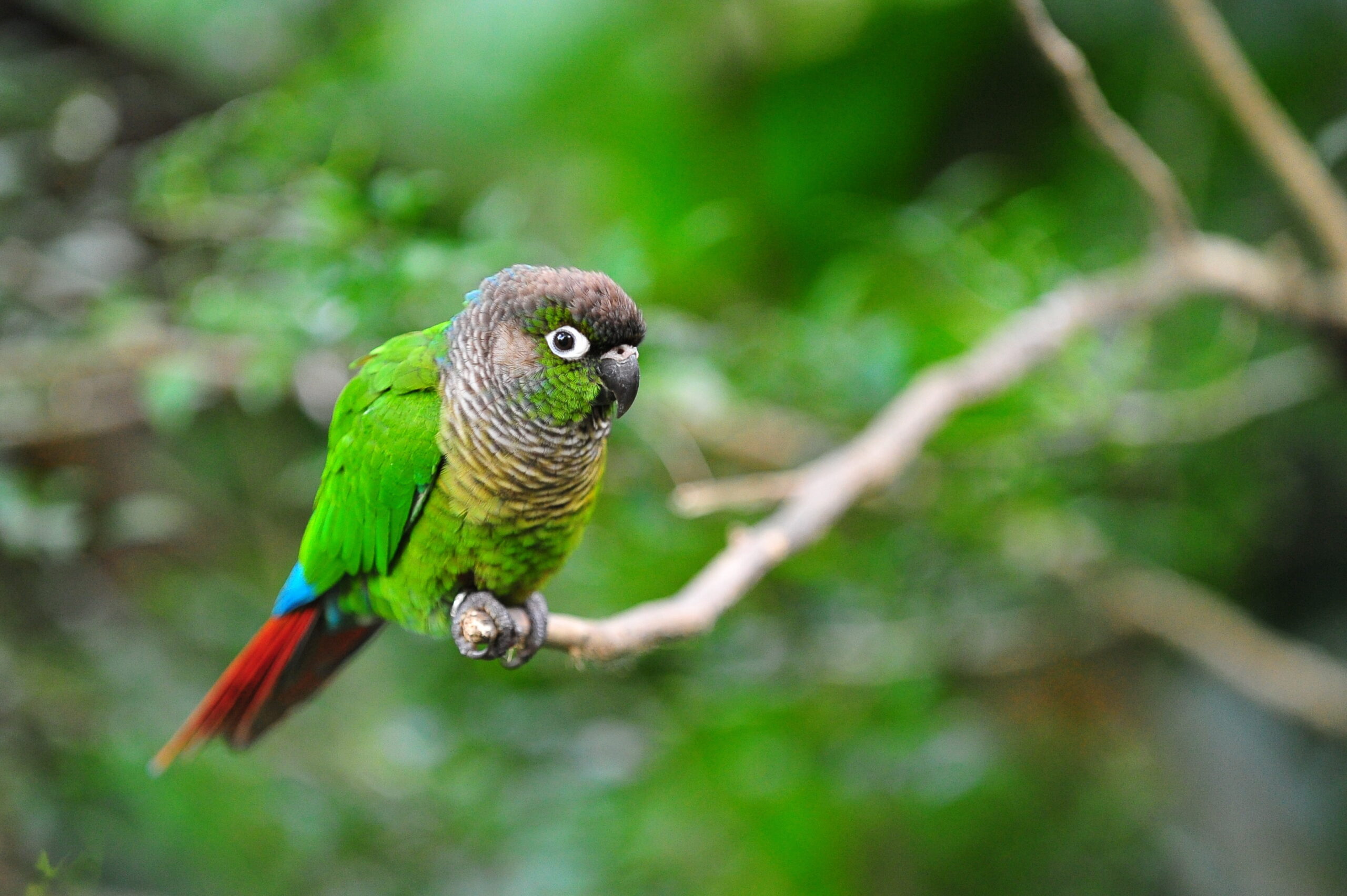Extraordinary Design Allows Tripedal Locomotion in Parrots
One of the most astounding characteristics of Earth’s life is its wide-ranging diversity. In fact, life’s diversity approaches the theoretically mathematical limit. Of the 182 animal skeletal designs theoretically allowed by the laws of physics, all but a handful have existed at some time during the past 600 million years. Amazingly, paleontologists have discovered 80% of these skeletal designs in the Burgess Shale (Canadian Rockies) fossils that represent the mid-Cambrian period.1
One of the few missing skeletal designs is three-limbed animals. No vertebrate animal, living or extinct, has three limbs. Biologists have labeled the three-armed or three-legged body plan as one of the rare “forbidden phenotypes.”
Use Your Head
While three-limbed animals don’t exist, tripedal locomotion does, specifically among members of the parrot family. Zoologists have noted that both in captivity and in the wild, parrots use their beaks for additional support while climbing. They did not know, however, if these birds used their beaks and neck and head muscles as a propulsive limb. Specifically, zoologists wondered if the beaks simply functioned as stabilizing hooks or manifested some or all the propulsive, tangential, and twisting capabilities of a third limb.
A team of four anatomists and zoologists led by Melody Young at the New York Institute of Technology performed a set of experiments on six captive rosy-faced lovebirds (Agapornis roseicollis).2 The birds climbed a semiflexible vertical wall outfitted with numerous grip handles for their talons and beaks. The semiflexible wall material had embedded sensors so that Young’s team could measure the propulsion and tangential reaction forces and power generated by each of the two legs and the beak of each bird. (Readers can download and watch a 1-minute video clip showing one of the birds climbing the vertical wall here.)
Young’s team established that all six lovebirds used a cyclical tripedal gait while climbing. The beak generated propulsive and tangential climbing forces comparable to those generated by each leg. Furthermore, Young’s team showed that relative to body weight, the propulsive and tangential forces generated by the birds’ beaks were equal to or greater than those forces generated by the forelimbs of humans and all nonhuman primates. Young’s team concluded that parrots’ neck muscles have been optimally designed to serve two distinct functions: feeding and climbing.
Pedro
During my teenage years, my family had a pet green-cheeked conure (a tropical American parrot) that we named Pedro. His total body length was only 8 inches. He could fly, but not well. He preferred to walk, hop, or climb. If he wanted to go to another room in our house, he would make a certain sound that told us he wanted to be transported there on one of our shoulders. My dad chopped down one of our holly trees, put it in our living room, and outfitted it with bird toys and equipment. Near our kitchen on a bench by a wide window that overlooked the backyard, we placed a huge bird cage that we left open. Inside the cage were more bird toys, several dowels that served as perches, and a ladder.
Pedro was a much more adept climber and acrobat than the lovebird in the video clip. He would go from branch to branch, or wire to wire, holding his whole weight from his beak while he swung his two legs over. Unlike the lovebird in the video that climbed rather slowly up the vertical wall, Pedro would race up his cage, ladder, or tree where it was obvious that the strongest and most agile of his “three limbs” was his beak and assortment of neck and head muscles. He would frequently grab the collar on my shirt with his beak and swing himself over from one shoulder to the other.
Pedro loved to entertain his favorite humans. His most acrobatic maneuvers were performed when he had an audience cheering him on. As I wrote in Hidden Treasures in the Book of Job, birds and mammals that possess a strong emotional bond with a human will outperform their wild cousins in the same manner that a human bonded to his or her Creator will outperform a similar human who is not.3
My own observations as a pet owner provide anecdotal support for the conclusions from Young’s team. That Pedro’s neck muscles were well developed as a result of his climbing and acrobatics seemed evident from his love for neck massages. If I wasn’t available to give him a neck massage, he would rub his neck against a branch or a dowel. Furthermore, I would also propose that the “third limb” of parrots provides yet another example of how our Creator has equipped his creatures with organs and body parts to serve multiple purposes with optimal efficiency. The beaks of parrots are designed so that these birds can (1) gather and consume high-energy foods with minimal energy expenditure (examples are their shelling and consuming sunflower seeds and peanuts); (2) vocalize; (3) climb and perform acrobatic maneuvers; and (4) show physical affection to humans (such as assisting in a favorite person’s personal grooming). I am certain readers who have pet parrots can provide their own examples of the design functions of their pets’ beaks.
Endnotes
- R. D. K. Thomas, Rebecca M. Shearman, and Graham W. Stewart, “Evolutionary Exploitation of Design Options by the First Animals with Hard Skeletons,” Science 288, no. 5469 (May 19, 2000): 1239–1242, doi:10.1126/science.288.5469.1239.
- Melody W. Young et al., “Overcoming a ‘Forbidden Phenotype’: The Parrot’s Head Supports, Propels and Powers Tripedal Locomotion,” Proceedings of the Royal Society B 289, no. 1975 (May 25, 2022): id. 20220245, doi:10.1098/rspb.2022.0245.
- Hugh Ross, Hidden Treasures in the Book of Job (Grand Rapids, MI: Baker, 2011), 137–139, 152–154.






